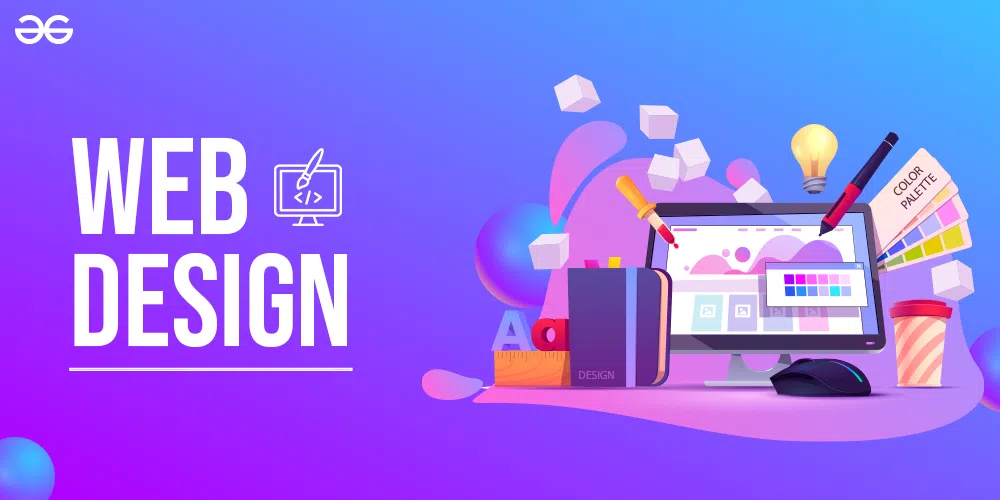Unlocking the Keys of Efficient Web Design Johannesburg Professionals
Unlocking the Keys of Efficient Web Design Johannesburg Professionals
Blog Article
Deciphering the Complexities of Responsive Website Design and Its Influence On Ease Of Access and Performance Across Different Gadgets
Responsive internet design (RWD) has actually emerged as an essential approach in developing digital experiences that are both practical and available throughout diverse gadgets. By integrating strategies such as liquid grids and CSS media questions, RWD not just enhances individual engagement however additionally addresses important ease of access concerns for people with specials needs.
Comprehending Responsive Website Design
Responsive web layout symbolizes the principle of flexibility, guaranteeing that websites give an optimum viewing experience across a selection of devices and display dimensions. This technique employs versatile grids, designs, and images, enabling the web content to dynamically change based upon the individual's device. The surge of mobile web usage has actually made receptive style not simply a fad, yet a necessity for contemporary web advancement.
At its core, receptive internet layout emphasizes fluidity and scalability. By using CSS media inquiries, programmers can customize designs to differing display measurements, ensuring that text remains readable and photos are presented properly. This method fits the diverse range of devices, from smartphones to large desktop computer displays, facilitating smooth navigating and communication.
Additionally, receptive internet layout enhances customer involvement by decreasing the requirement for too much zooming or straight scrolling, which can diminish the individual experience. By prioritizing accessibility, organizations can reach a more comprehensive audience, ensuring that all customers, no matter of device, can access material properly. Eventually, understanding receptive website design is essential for developing web sites that are not only aesthetically attractive but easy to use and likewise functional across diverse systems.

Secret Concepts of RWD
Highlighting adaptability and user-centric design, the vital principles of receptive website design (RWD) focus on developing a seamless experience no matter of the device being utilized. One basic principle is fluid grids, which make use of relative units like portions rather of taken care of dimensions. This technique makes certain that format components adjust proportionally to differing display dimensions, preserving visual coherence.
Another essential principle is flexible images and media, which resize within their containing components. web design Johannesburg. By using CSS strategies such as max-width, developers can avoid pictures from exceeding their parent containers, making sure that visuals continue to be sharp and suitably scaled throughout devices
Additionally, media queries play a crucial duty in RWD, enabling developers to use certain CSS styles based upon the attributes of the device, such as height, alignment, and width. This ability enables customized experiences that enhance use and engagement.
In addition, a mobile-first method is increasingly preferred, where designs focus on smaller displays and progressively boost for larger devices. This principle not just optimizes efficiency but additionally deals with the expanding prevalence of mobile surfing. Jointly, these concepts form the backbone of receptive website design, cultivating a versatile and easy to use electronic atmosphere.

Effect On Ease Of Access
The integration of responsive website design plays a critical duty in improving ease of access for all users. By adopting an adaptable format that adjusts to varying screen dimensions and positionings, responsive layout makes certain that material stays easily accessible and understandable no matter of the device made use of. This adaptability is particularly substantial for individuals with disabilities, that may rely upon assistive modern technologies that work much more properly when material is structured responsively.
Furthermore, receptive website design decreases the likelihood of problems such as horizontal scrolling, which can hinder individuals with motor specials needs or visual disabilities. By providing a regular individual experience throughout gadgets, developers can prioritize access features such as key-board navigation and screen visitor compatibility, permitting for a more comprehensive electronic atmosphere.
In addition, online search engine increasingly favor receptive layouts, which can enhance exposure for customers seeking obtainable content. As an outcome, organizations and organizations are urged to adopt these techniques not just to abide by ease of access criteria yet also to reach a wider target market. Ultimately, responsive website design is critical in advertising fair access to info and services across varied individual teams, therefore cultivating an inclusive digital landscape.
Capability Throughout Tools

Additionally, the efficiency of web applications can vary dramatically across tools. Smart phone often have limited processing power and slower web links, which can influence loading times and total user experience. It is important for developers to enhance photos, manuscripts, and other various other sources to make certain that performance remains effective and constant, despite the tool being made use of.
In addition, the format and framework of web content must adapt fluidly to various display dimensions to keep usability. This adaptability not just enhances customer interaction yet likewise lowers stress, inevitably resulting in higher retention rates. In recap, focusing on performance across devices Resources is crucial for creating a effective and comprehensive internet existence that accommodates the diverse demands of individuals.
Best Practices for Execution
Applying responsive website design successfully requires a tactical technique that focuses on user experience and ease of access. To accomplish this, start by adopting a mobile-first design viewpoint, which highlights developing an optimum experience for smaller displays before scaling approximately bigger devices. This approach makes sure that necessary content is prioritized and that features are seamlessly incorporated.
Next, make use of liquid grids and flexible designs. Utilize loved one devices, such as portions, instead of repaired units like pixels - web design Johannesburg. This versatility permits material to resize dynamically based upon the screen's measurements, improving usability across numerous gadgets
Moreover, integrate media inquiries to apply particular CSS regulations based upon the qualities of the device, such as resolution, elevation, and size. This targeted strategy permits for tailored experiences that accommodate the special capabilities of each tool.
Furthermore, focus on access by ensuring that all interactive elements are easily navigable via touch or key-board. Carry out semantic HTML to boost screen reader compatibility and maintain high contrast proportions for readability.
Final Thought
Finally, receptive website link web layout offers as a foundational aspect in developing available and practical electronic experiences across diverse devices. By incorporating fluid grids, adaptable images, and CSS media questions, responsive design not only improves user engagement however also promotes equitable access to info for all people, consisting of those with specials needs. Following finest techniques in implementation guarantees that web sites remain adaptable, ultimately fostering a much more inclusive digital setting that satisfies the differing requirements of customers.
Receptive internet style (RWD) has actually arised as an essential strategy in developing digital experiences that are both easily accessible and functional throughout diverse devices.Receptive internet style symbolizes the principle of flexibility, making certain that websites provide an ideal watching experience across a range of devices and screen dimensions.Highlighting adaptability and user-centric style, the essential concepts of receptive web style (RWD) rotate around developing a seamless experience regardless of the gadget being used.Capability across devices is a vital consideration in web design, as individuals engage with material through a selection of platforms, consisting of tablets, mobile phones, and desktop computers.In verdict, receptive web layout serves as a foundational component in producing accessible and functional electronic experiences across varied gadgets.
Report this page